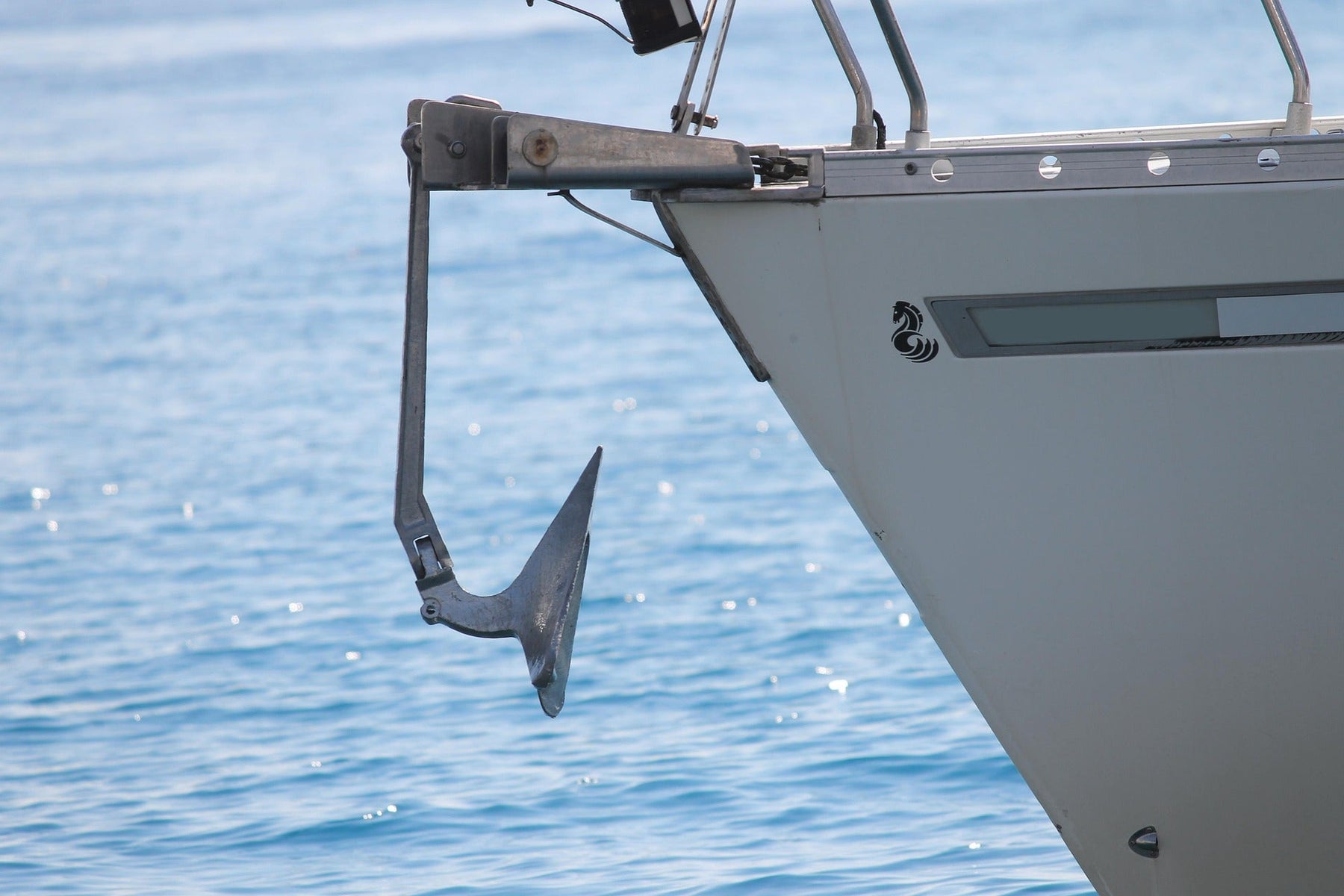
Boat Anchor Types: A Comprehensive Guide

Anchors are essential for boats, keeping them secure and preventing drifting in wind or current. There are many boat anchor types, each designed with different shapes and mechanisms to suit various vessels and seabeds. This guide covers the main anchor styles (Fluke/Danforth, Grapnel, Plow/CQR/Delta, Bruce/Claw, Rocna, Mantus, Mushroom, etc.), their structure, pros and cons, and appropriate use cases. We also include comparison tables and tips on how to choose a boat anchor, optimizing for keywords like boat anchor types, best anchor for kayak, marine anchor comparison, and Rocna anchor vs Delta to help both enthusiasts and general readers make informed decisions Reference: anchoring.com en.wikipedia.org
The table below summarizes each anchor type’s common use-cases: suitable boat size, ideal seabed, relative holding power, and portability. This marine anchor comparison helps visualize which anchor suits which scenario.
| Anchor Type | Suitable Boat Size/Use | Best Seabeds | Holding Power | Portability/Storage |
|---|---|---|---|---|
| Fluke (Danforth) | Small boats, tenders, kayaks | Sand, mud | Very high (best in soft ground) | Light, folds/splits for storage |
| Grapnel (Foldable) | Kayaks, dinghies, small boat | Rock, coral, weed | Moderate (hooks well, poor in sand/mud) | Extremely light, collapsible |
| CQR Plow (Hinged) | Medium to large cruiser | Sand, mud, mixed | Moderate | Heavy, bulky, non-folding |
| Delta/Wing Plow | Medium to large cruiser | Most seabeds | High | Heavy, bulky, non-folding |
| Bruce/Claw | Cruising sailboats, powerboats | Sand, mud, rock | Medium-high | Heavy, non-folding |
| Rocna (Spade) | Cruising yachts | All seabeds (incl. grass) | Very high | Heavy, non-folding |
| Mantus (Spade) | Cruising yachts | All seabeds | Very high | Heavy, non-folding |
| Mushroom | Fixed moorings, buoy | Soft mud/silt | Very high (after burial) | Very heavy, not portable |
Fluke (Danforth) Anchors

Figure: Fluke (Danforth) anchor 【Our XHDFSM/XHJD series】. Fluke anchors have large flat blades and a high holding-power-to-weight ratio. Designed in the 1940s, Danforth anchors are lightweight and excel in soft bottoms.
Once their blades are fully buried in sand or mud, they generate exceptional holding force. This makes them ideal for small boats or as backup anchors. The downside is that fluke anchors perform poorly on hard bottoms (rock, coral, grass) because their flat blades cannot penetrate effectivel.
On the plus side, fluke anchors are easy to stow (many models collapse or detach) and carry due to their light weight. Overall, if your boat often anchors in sandy or muddy spots, a fluke-type anchor is highly effective.
Grapnel Anchors

Figure: Folding grapnel anchor 【Our XHZDM series】. Grapnel anchors consist of a shank with multiple (often 4) folding prongs. They are extremely popular for small craft, kayaks, and dinghie. Because they have several sharp claws, grapnels will hook onto hard seabed structures or reefs regardless of their orientation. They set quickly in rocky or coral bottoms, making them the best anchor for kayak fishing trips on irregular terrain.
However, grapnel anchors have very small surface area and thus little holding power in sand or mud. Their thin shape can also foul on debris. Foldable grapnels are compact and very easy to carry, but fixed-prong versions can be bulky to store.
In summary, a folding grapnel is a great choice for kayaks and small boats in rockier bottoms, but not suitable as a primary anchor in muddy or sandy conditions.
Plow (CQR/Delta) Anchors


Figure: Plow anchor (Delta/Wing). Plow-style anchors resemble an agricultural plow and include designs like the hinged CQR 【Our XHLSM series】 and fixed-shank Delta anchors【Our XHSJM series】. The classic CQR (Coastal Quick Release) originated in 1933 with a hinged shank. This hinge allows the anchor to change angle under shifting loads.
The Delta (also called Wing) anchor, introduced in 1992, improved on this by eliminating the hinge and adding a weighted tip for better penetration. Both anchor types perform reasonably well in a wide range of seabeds (sand, mud, gravel). They tend to plow into the bottom but may occasionally “break out” (lift up) under changing forces. In testing and practice, Delta anchors often show better holding power per pound than CQR, thanks to their larger blade area. However, neither shines in extreme conditions: both struggle in hard rock bottoms.
Plow anchors are heavier and bulky, requiring substantial anchor rollers and space. In general, a plow anchor (CQR or Delta) is a good all-round choice for cruising boats, balancing versatility with ease of use.
Bruce/Claw Anchors

Figure: Bruce/Claw anchor [Corresponding to our XHB series]. The Bruce (claw) anchor, developed in the 1970s, is one of the most popular anchors for recreational boats. It has a simple three-claw shape that makes it easy to set.
A Bruce anchor performs well in most seabeds – sand, mud, rock, and coral – and resets automatically if it ever breaks loose. For example, tests have shown Bruce anchors set quickly and hold reliably in mixed bottoms. The trade-off is that Bruce anchors have somewhat lower holding power per pound than some modern designs, so a boat may need a heavier Bruce anchor for the same holding capacity. Also, they can have difficulty penetrating very hard clay or dense weed.
Overall, Bruce/claw anchors are an excellent all-purpose anchor for larger sailboats and powerboats, offering easy deployment and good performance in a variety of conditions.
Rocna and Mantus Anchors

Figure: Rocna anchor. Rocna and Mantus represent a newer generation of spade-style anchors with roll bars. Rocna, designed in New Zealand (2004), features a sharp-spade fluke and a roll-bar to keep it upright as it sets. This design causes Rocna anchors to dig in very quickly and hold exceptionally well in grass, mud, or sand.
Mantus anchors are similar in concept: they have a wide roll-bar and optimized blade geometry. Mantus claims faster setting and superior holding in challenging bottoms like hard sand or clay, thanks to their broader roll-bar and high-tensile steel shank.
In practice, both Rocna and Mantus are high-holding anchors that outperform traditional plows in most tests. For example, when comparing Rocna anchor vs Delta anchor, the Rocna typically sets faster and digs deeper into the bottom, while the Delta is simpler in design and still offers good all-around holding. These modern anchors are popular on blue-water cruising yachts but tend to be heavier and more expensive, reflecting their advanced performance.
Mushroom Anchors

Mushroom anchors [Corresponding to our XHJM series] are permanent anchors used for moorings and fixed stations (e.g. lightships, buoys), not usually carried aboard small craft.
Shaped like an upside-down mushroom, they are best for very soft mud or silt bottoms. When a mushroom anchor is deployed, it slowly sinks into the mud; over time, the soil around it consolidates, greatly increasing its holding power. Initially, its hold may be only about 2× its weight, but once fully buried it can reach roughly 5–10× the anchor’s weight. The downside is that mushroom anchors only work in fine-bottom mud and are extremely heavy; once deployed they are not meant to be moved.
In summary, they are used where an anchor must hold for long periods with minimal chance of dragging (e.g. mooring a channel marker in silt).
